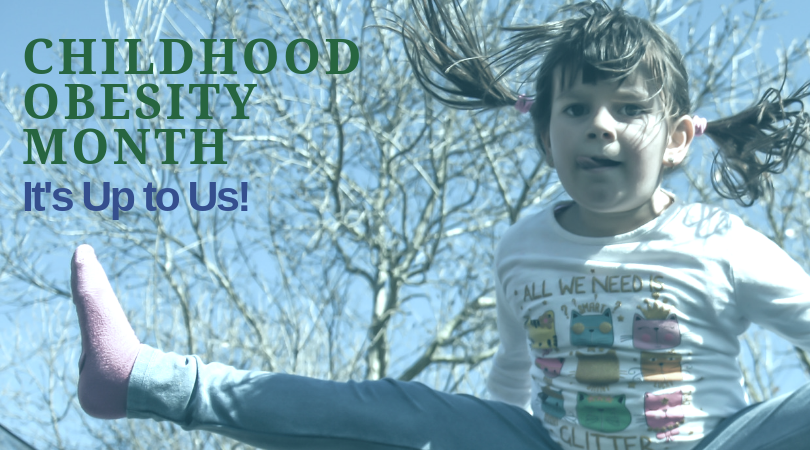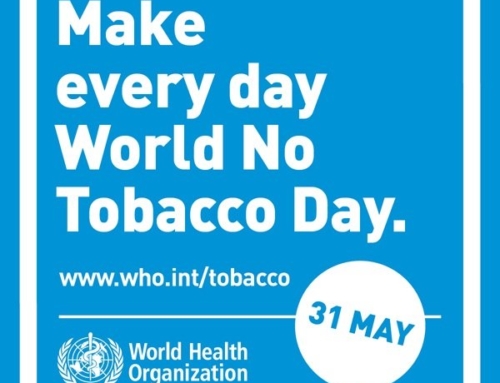As parents, caregivers, teachers, and community members, we are at the forefront of ensuring the health of our children and reducing their risk of chronic health conditions. We can do this by supporting and encouraging children to participate in physical activities that get them moving for at least 60 minutes a day, providing nutritious food and beverage options, and making sure they get adequate sleep. This sounds much easier than it is, and the reality of convincing our kids to step away from the television or computer and make healthy food choices is a daily struggle. Childhood obesity has become a major problem in the United States and it is crucial that we adults step up to the plate (in more ways than one) and show children that making even small changes can make a big difference to their future.
In the United States, approximately 1 in 6 (18%) youth ages 2-19 is obese. Centers for Disease Control and Prevention defines obesity in children and young people as BMI (Body Mass Index) at or above the 95th percentile for young people. This number puts these children at higher risk for asthma, diabetes, heart disease, bone and joint problems, and sleep apnea. If we do not make changes now, they are more likely to have obesity as adults and continue to increase their risk of physical and mental health problems.
There are many ways for all of us to join in the effort to prevent obesity and support healthy growth in children. As a parent or caregiver, you are a great influence on their choices and actions, so you have an opportunity to lead by example. You can begin by helping them develop healthy eating habits and providing them with a variety of colorful fruits and vegetables, whole grains, lean meats, and low-fat dairy products to receive the recommended daily intake of essential foods. You can also serve reasonably sized food portions, limit (or eliminate) sugar-sweetened beverages, replace high-calorie snacks with low-fat tasty alternatives and encourage them to drink more water. Limiting their time in front of electronic devices and encouraging active play is also important.
Planning meals and snacks is a good start to eating healthy. You can make it fun for yourself and the kids, find new recipes and explore ways to incorporate all the nutrients you need in a delicious and enjoyable way. Check out Choosemyplate.gov for family-friendly recipes, games, and activities for the kids. You can also visit the USDA’s Recipe Website for healthy affordable recipes and ideas. Get kids in on the action by letting them pick out new foods to try at your local farmers market or grocery store to make preparation fun. They may be surprised by how much they like the new foods they try. As their caregivers, we are responsible for guiding them and being their role model. Parenting experts agree that children pick up behaviors based on what they observe, so if they see you making and enjoying healthy food choices, they will start to choose it themselves.
To get kids to become more active we must begin by turning off the TV, putting down the tablet and phone (that means parents too) and take charge of getting everybody moving. With all the demands we have, we all just crave a little downtime to relax, and physical activity can be a great stress reliever. One way to break free of electronics is to put all devices in one spot for 30-60 minutes and have an age-appropriate activity planned. For some good age-based activity ideas, visit Kidshealth.org or healthychildren.org.
Finally, as a community member, there are plenty of ways you can support healthy growth in children. It really does take a village to raise a child, and we are all an essential part of their growth and development. We can build relationships with children through patience, attention, acceptance, and encouragement. We can also be an advocate for change and support in our communities. Are there enough safe places for children to play? Do we have access to affordable foods? Do our schools offer healthy food options or have after-school programs that incorporate physical activities? These are good questions to ask yourself and local city officials. If we all work together we can help prevent childhood obesity.
Yes, that means you, too!
*Individual results may vary
References:
- September is National Childhood Obesity Month. (2017, September 05). Retrieved from https://www.cdc.gov/features/childhoodobesity/index.html
- Childhood Overweight and Obesity Prevention (2008, May) Retrieved from https://www.ncbi.nlm.nih.gov/pmc/articles/PMC2289973/
- Tips for Parents- Ideas to Help Children Maintain a Healthy Weight (2018, May 23) Retrieved from https://www.cdc.gov/healthyweight/children/index.html
- 5 Ways to Get Your 5 a Day (2016, October) Retrieved from https://kidshealth.org/en/teens/veggies-tips.html
- How to Get Kids to Eat Healthy Food ( 2018, August) Retrieved from https://wellnessmama.com/1063/guide-to-feeding-healthy-kids/
About the Author: Brooke Frye
 |
Brooke Frye is currently an intern at SRAHEC with a Bachelor’s of Science in Health Education. She will graduate from the University of Florida in December 2018. |








Very interesting article. Some very good tips and references for parents. Today’s society is too much on the go and fast foods have definitely taken over. Healthy eating should be number one priority for our children and grandchildren.